Would you like a brief explanation of SAP’s recently launched Advanced Available to Promise (aATP) feature and its capabilities? With this guide, we will mainly focus on classic ATP vs. aATP. Please dive further for more details.
1. Basics of the Available to Promise function.
Before we dive into the newly added aATP functions, let’s just try to understand or recap with an example of what is “Available to Promise” in SAP ERP.
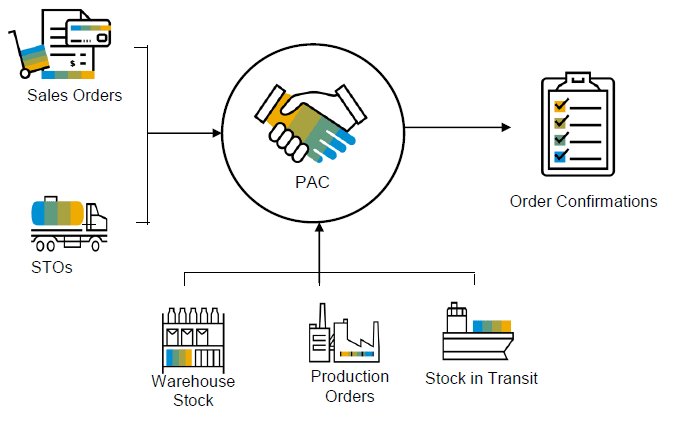
Consider the metal industry as an example, where metal batches such as carbon steel sheet or stainless steel sheet are stored and sold.
The company has 100 PCs in its unrestricted stock inventory for carbon steel sheets.
Can they sell the consumer a hundred PCs if they receive an order for that many now? The answer would be yes if the stock wasn’t committed to any other sales orders.
What is meant by “not committed to another order” in this context?
This means that SAP operates on a first-come, first-served basis because we have a fixed stock and several customers.
Therefore, even though we have 100 PCs in our warehouse, if Customer ‘A’ places an initial order for 60 PCs, we can only sell 40 PCs to the next incoming order.
Hence, in other words, we can call ATP stock a core function of ERP for the correct distribution of stock among all incoming sales orders.
2. The calculation for ATP Quantity
Stock + receipts—an already committed requirement
Here, the stock is the real stock lying in the warehouse.
Receipts are from the purchase requisition, purchase order, or production order.
Committed quantity is the quantity that is already committed to an earlier sales order or assigned in the delivery or any reservations (from production or safety stock).
3. Shortcomings with Classic ATP
- There was no ceiling on the amount that may be sold to prevent a shortage of goods or a limitation on capacity to take the logistics team’s capabilities into account.
- Only one plant was being checked for ATP; no other plant stocks or storage locations were being taken into account.
- There was no explicit explanation given for any gaps in the fulfillment.
- Huge time and not so flexible setting with backorder processing.
- There was no designated mechanism for the fulfillment specialist to reassign the stocks from one sales order to another before creating delivery.
- During a supply shortfall, there is no assurance of supply for any one group or channel.
4. Evolution of ATP
To fulfil these shortcomings, SAP evolved by adding functions like “Global Available To Promise” (gATP) and “Advanced Planner and Optimizer” (APO).
However, looking at the futuristic lean design phenomena and error-free system for better performance, SAP introduced aATP functionality with S/4 HANA.
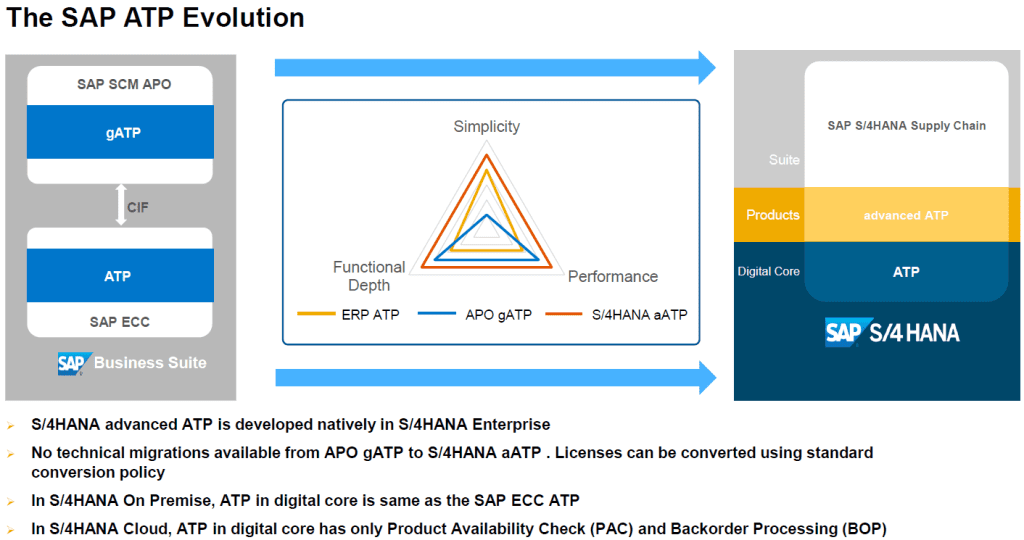
5. Classic ATP vs Advanced ATP
Below is a pictorial representation of the feature comparison between classic ATP and advanced ATP.
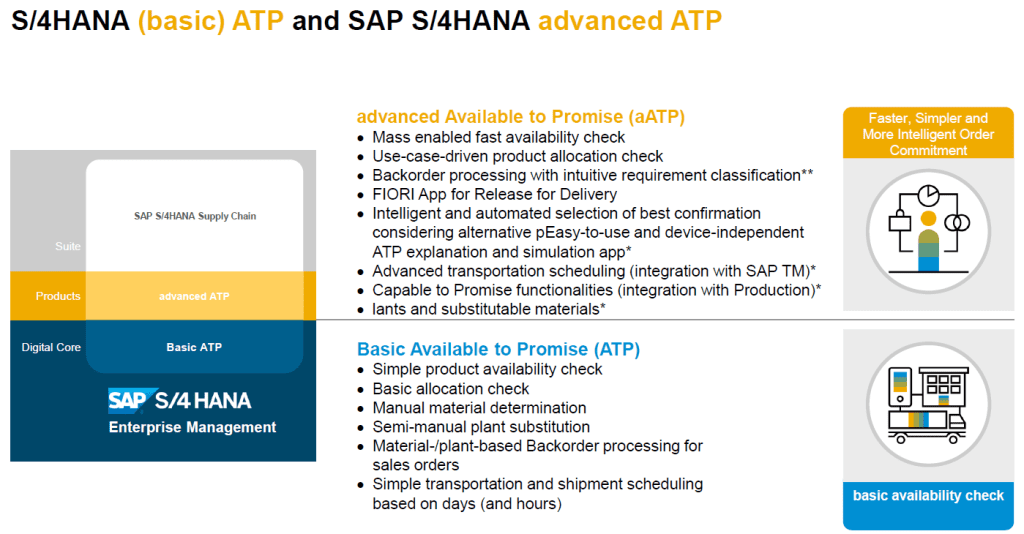
6. Integrated order processing:
Now, with the introduction of aATP, all these shortcomings are fulfilled using Integrated Order Promising.
This helps in:
- Accurate Order promising.
- Actual Production order constraints
- Balance between demand and Supply
- Consideration of Transportation Scheduling
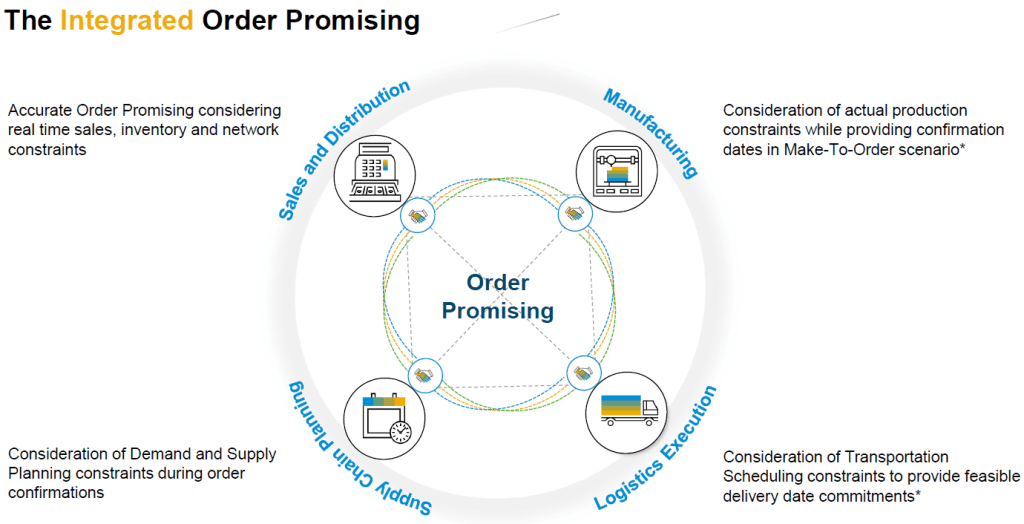
7. Components of aATP
Product Availability Check (CA-ATP-PAC):
Classis PAC with some enhanced functionality to accommodate S/4 Hana aATP requirements, like enhanced insights to confirm situation and determination.

Backorder Processing (CA-ATP-BOP):
Maas update of order quantity confirmations based on business priorities or changes in supply and demand situations for optimal order fulfillment using the easy-to-use ‘Select option tool’.
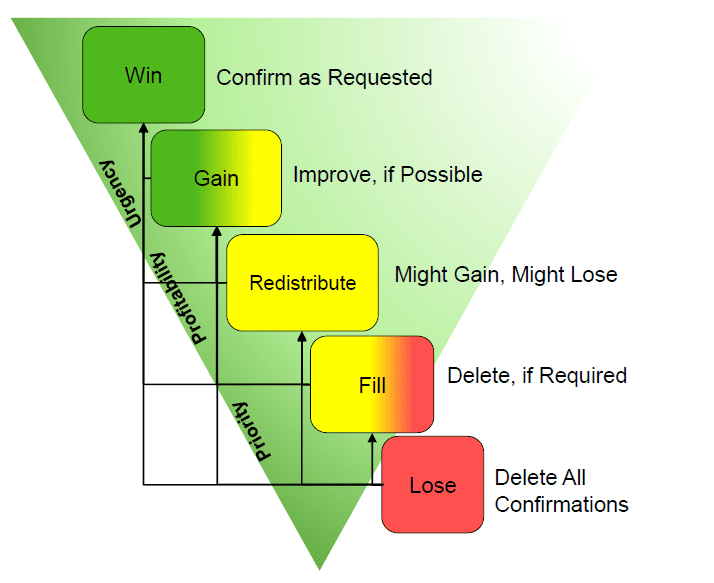
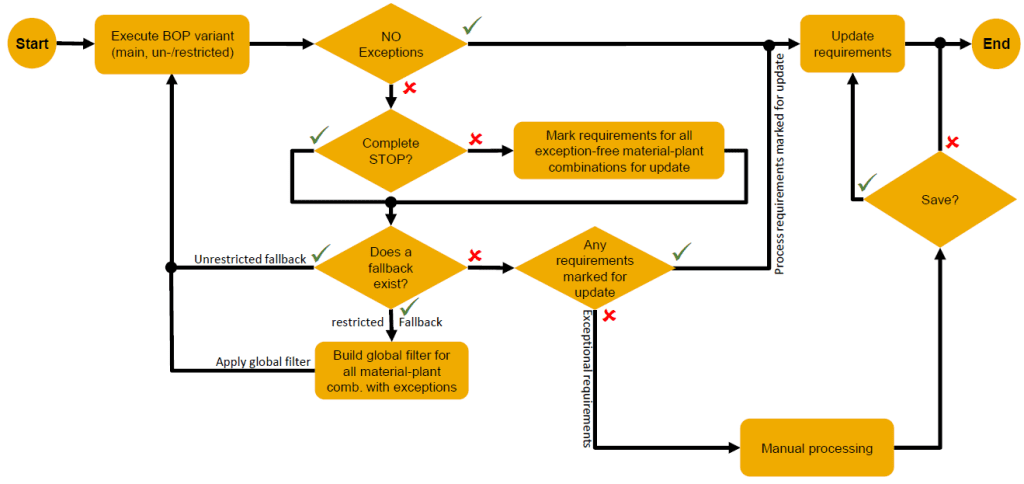
Product Allocation (CA-ATP-PAL):
Sales Constraint (What Should Be Delivered):
A simple and flexible product allocation set up to provide a mechanism for restricting the confirmation of orders to prevent supply shortage situations caused by single high-volume orders leaving other orders unconfirmed.
Capacity Constraint (What Could Be Delivered):
Create a constraint in the system by considering the capacity of the logistics team so that fulfillment can be done on time without making a false delivery date promise.
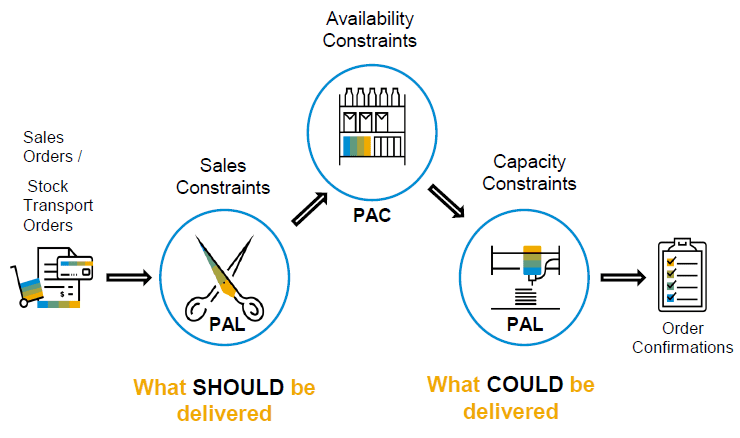
Supply Protection (CA-ATP-SUP):
With the easy-to use FIORI app, to protect the interests of key customers and avoid escalations during stock-out situations, a certain portion of a material in a plant can be reserved for future demand fulfilment.
This also helps in optimizing profitability by providing better fulfillment for lucrative orders.
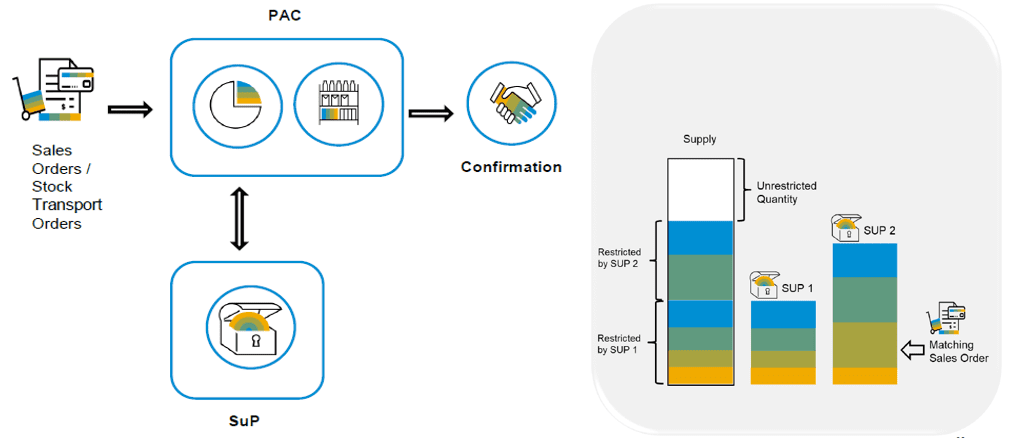
Business Process Scheduling (BPS)
Flexible app to add duration and working times for more granular scheduling functions for business-critical functions like cut-off time for transportation planning or picking activity.
Alternative-Based Confirmation (CA-ATP-ABC)
This helps to check availability in different plants and storage locations in the event that the requested plant is unable to fulfill the requested quantity by a particular date.
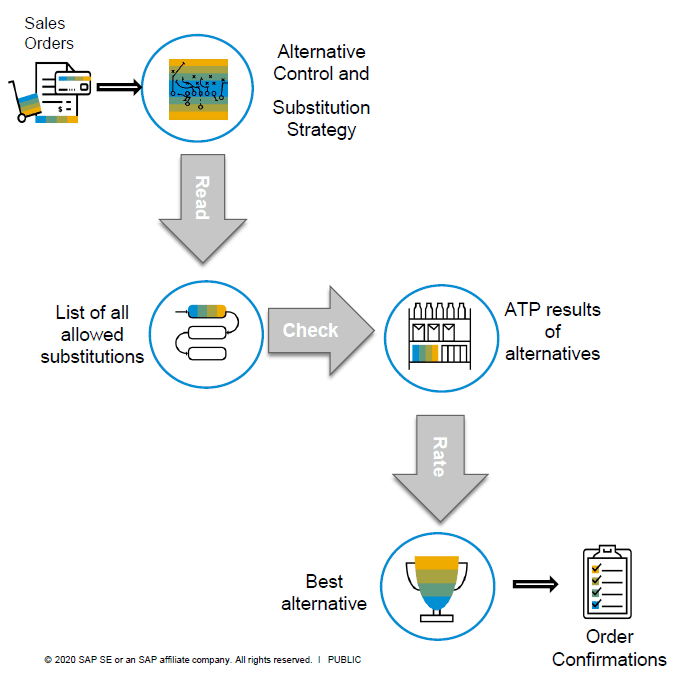

In the upcoming knowledge posts, I will be sharing more details on each component. Please stay tuned for the same.
Comment down below for more queries.
Also, if you are a beginner, it’s worth checking out the post on SAP For Beginneres.
